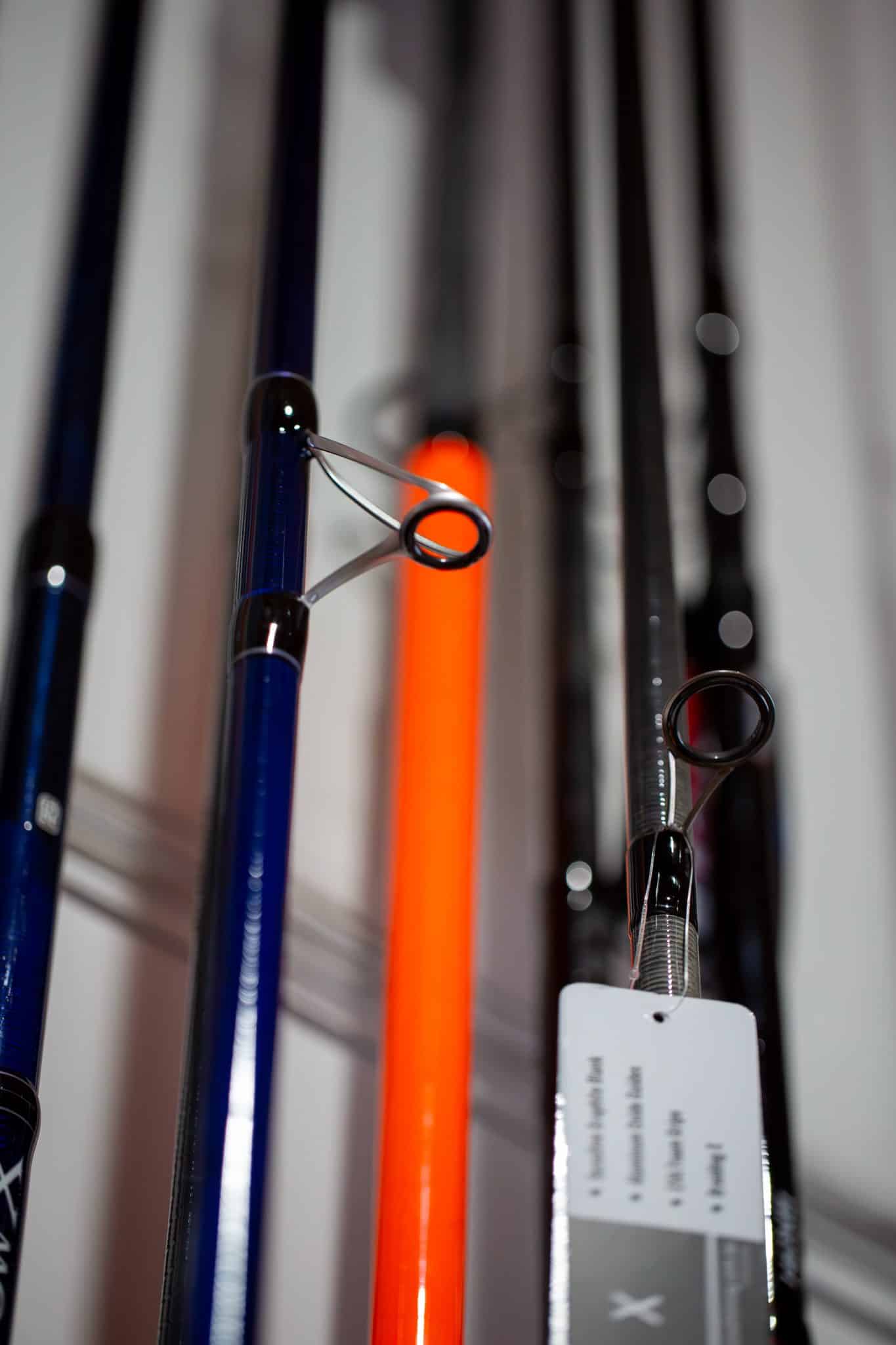This seemingly strange design is no error. It is a well-thought-out technique adopted to boost the performance and durability of fishing rods. This article will give you a detailed explanation as to why some fishing rod guides are installed ‘upside down’.
Reasons for ‘Upside-Down’ Fishing Rod Guides
Knowing the reasoning behind this interesting design choice can completely transform your perspective. You will no longer see a ‘mistake’ but a strategic innovation designed with the angler’s best interests in mind.

Fewer Wind and Spooling Knots
In a conventionally installed guide, the line spiralling off the reel is more susceptible to striking the guide legs, leading to potential snags or tanglings. However, with the guide installed upside down, the two extended legs are shifted, reducing the chances of the line hitting them. Consequently, the line continues through the guide without unnecessary interruptions — a simple yet significant advantage that can dramatically enhance your fishing efficiency!
But, it’s important here to highlight that the impact of this upside-down installation varies significantly depending upon the specific reel-to-rod setup in use. Some anglers may witness a substantial improvement, while others may encounter only minimal changes. The key is to familiarise yourself with your particular gear to attain optimum kinetic synergy, which is the heart of successful fishing.
It’s also essential to recognise that the people designing these rods have vastly more experience than any of us do when designing and implementing these rods. Sure – you might have been fishing for 50-plus years and owned at least a dozen rods, but these people spend all day thinking about, designing, testing and refining rod design. They do this stuff for a reason.
This upside-down guide placement also allows for a more direct line path from the reel to the first guide, reducing kinetic energy loss. This placement can increase casting distance and accuracy, providing a strategic advantage.

Increased stability and durability
This arrangement distributes the strain more uniformly throughout the rod, resulting in consistency and equilibrium during an epic battle against a lunker.
Every ounce of steadiness is of utmost value when grappling with brawny bait. The inversion of the guides is an old-hand method to guarantee such fortitude. Intense line tension pressure is then dispersed onto two legs instead of being focused on a lone point.
Let’s investigate further. Rods showcase a conventional “arch” or bend when a fish exerts line tension. This arch is perceptibly pronounced near the handle in usual guide configurations, leading to a disproportionate line pressure distribution. Conversely, the inverted arrangement of the guides ensures an even arch adjustment, hence maintaining a regular rod performance throughout the fight. The upshot? You’re presented with a more balanced, precise and controlled environment to reel in your monstrous prize.
Lowrider Guides on Surf Rods
One of the first places the reversed guide design was utilised was on Surf Rods.
These rods, typically longer than your average fishing rod, cast baits and lures from beaches, piers, jetties, or any shoreline feature. They operate under extreme circumstances, often facing heavy weights and tackling the power of ocean swells.
Enter the upside-down or lowrider guides. These nifty little components changed the game for surf anglers. Their unusual orientation isn’t merely about aesthetics; there’s a practical reason behind it.
Lowrider guides installed upside down drastically improved the casting performance by aligning the fishing line with the axis of the rod. An additional advantage is minimised wear and tear. The torque of the fishing line running against the guides can cause excessive wear over time. With the guides installed upside down, the line’s pressure evenly distributes across the guide’s length, reducing the friction and significantly lessening the wear. It extends the life of both the guides and your line, a win-win.
A distinct advantage that comes with lowrider guide configuration is optimised casting distance. When installed upside down, these guides can indeed assist in extending the casting range. Precision in both direction and distance can remarkably improve due to the lines aligning closer to the rod during the casting action. This phenomenon simplifies achieving long-distance casts with greater accuracy.

K-type Guides
As rod designers looked for better ways to design rods, the mounting of guides was explored, resulting in alternative designs of the guides themselves.
The K-type guide is one such ingenious design. Developed by Fuji, a renowned leader in rod component innovation, the K-guide shifts from the conventional cylindrical shape to a more oriented, angular design.
They do appear unusual, a bit upside-down. But rest assured, this seemingly odd design serves a significant purpose. It redirects the line away from the blank, minimising friction and enabling smoother casting and reeling movement.

Grasping the reality that things are not always as you perceive they should be
Like many other aspects of life, fishing requires adaptability framed by the understanding that the seeming aberrations might be hidden pearls of wisdom worked through ages of trial and error.
A fishing rod with an upside-down guide may look peculiar and even wrong, but this unique design choice is grounded in reason and expertise.
Often, it is human instinct to judge based on first impressions and longstanding beliefs. This instinct applies to many aspects of life, including fishing rod designs. A preconceived notion clings to the idea that something ‘looks’ wrong if it doesn’t align with conventional standards. The unconventional installation of guides on fishing rods is a prime example. Whether new to the hobby or experienced, an angler may view this upside-down configuration with scepticism, even considering it a manufacturing flaw.
Despite initial appearances, this design choice is reasonable. It’s a result of thoughtful engineering and strategic planning. Though it contradicts traditional design rules, it yields valuable benefits that can favourably impact your fishing experience. And so, it challenges our preconceived notions and asks us to rethink the ‘standard’, welcoming the possibility that there might be more efficient, innovative, and beneficial designs that go beyond our initial perceptions.
Considering this alternate perspective is the key to embracing new trends and developments. The upside-down fishing rod guide might look ‘wrong’, but it’s a salient reminder that often, what seems ‘wrong’ at first glance can pave the way for advancements, pushing boundaries of design and functionality to improve our experiences.
https://www.stripersonline.com/surftalk/topic/474503-k-guides-vs-low-riders/

